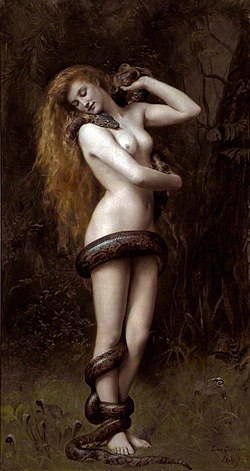This article needs additional citations for verification .(June 2021) |

Lilith, a biblical character suggested to be Adam's first wife and a significant female figure from Jewish mythology, has been developed over time into distinct characters in popular culture. [1] [2] One writer on witches, Judika Illes, wrote, "No spirit exerts more fascination over media and popular culture than Lilith. Her appearances are genuinely too numerous to count." [3] [4] [5] Lilith is one of several figures with biblical or related origins integrated into popular culture who have been titled demon. [6] [7]